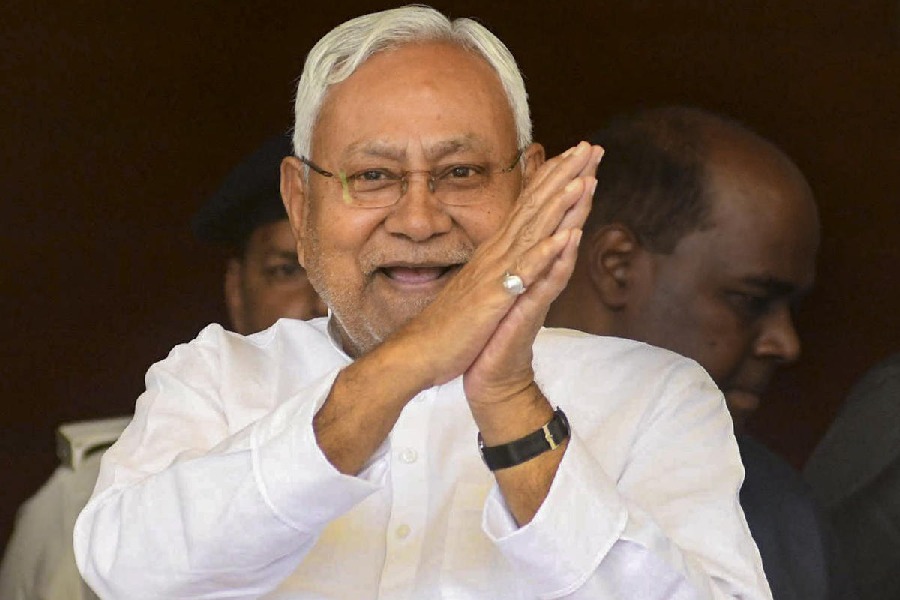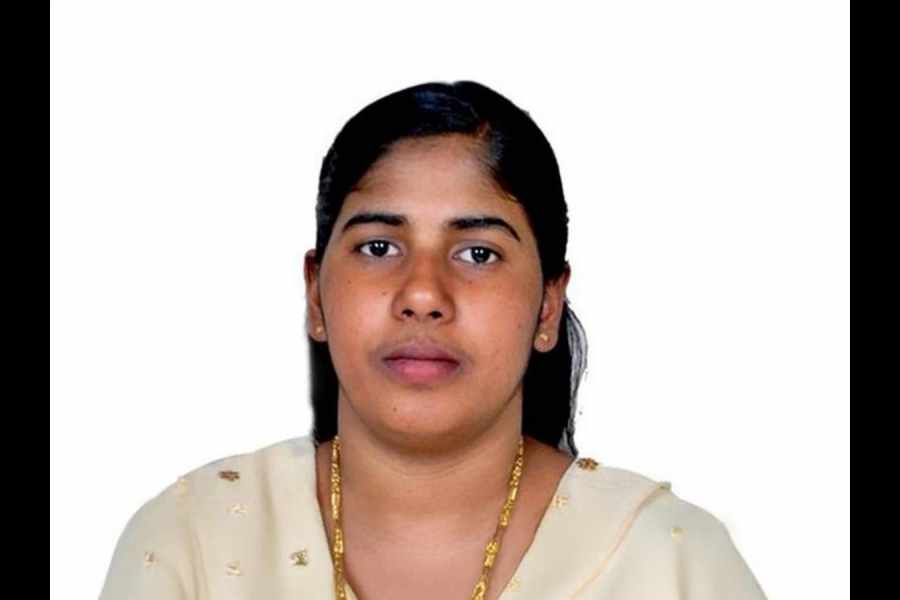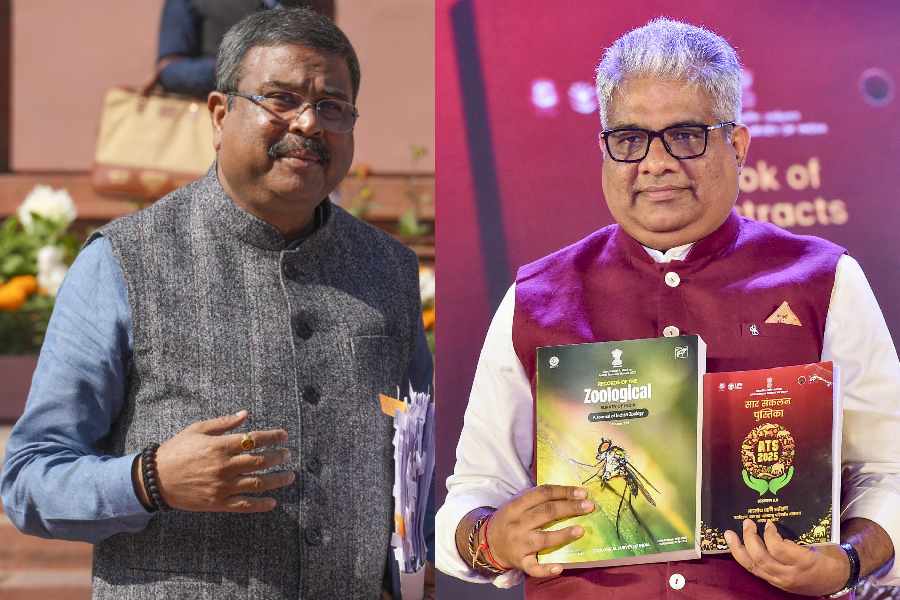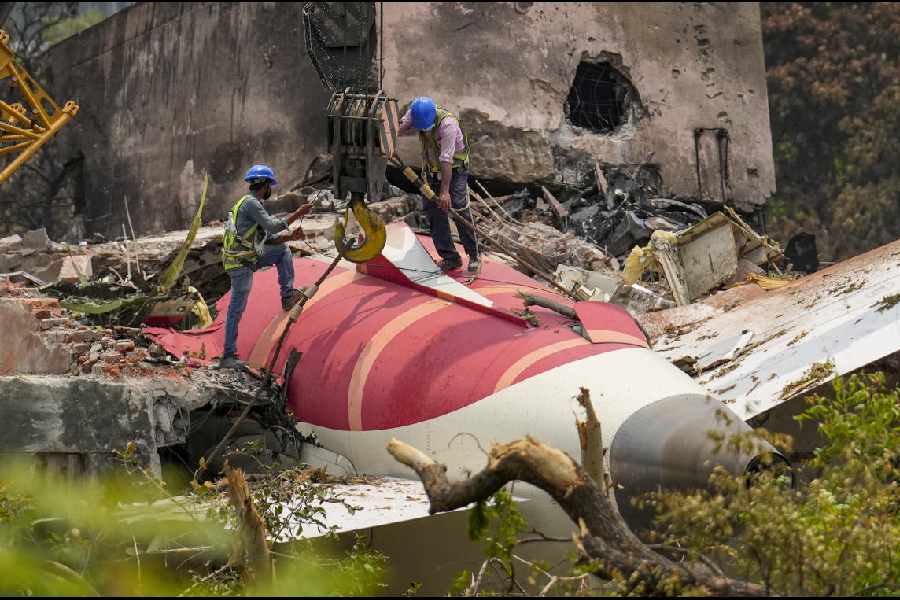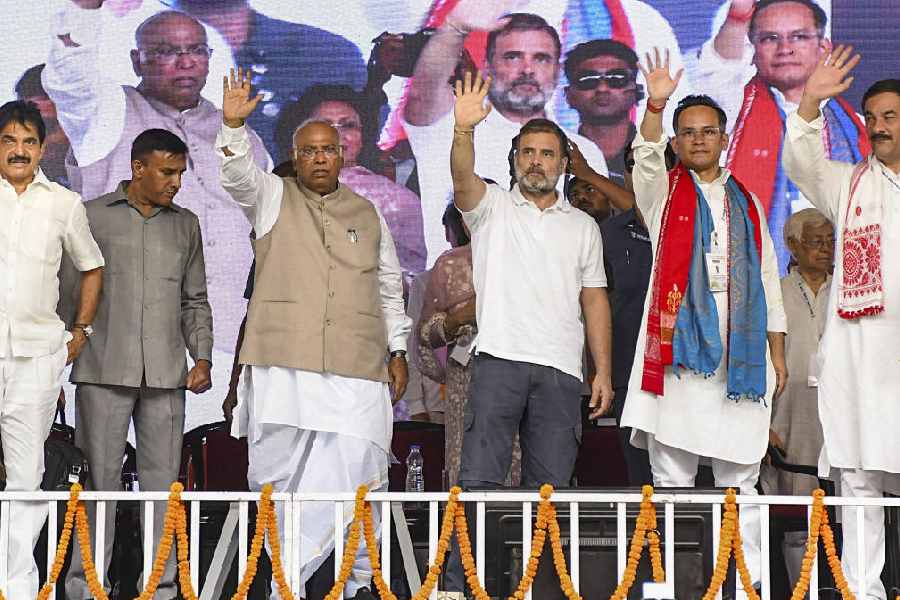
Calcutta: The city streets were filled with the spectacle and sound of Tagore worship on Wednesday on the occasion of the poet's 157th birthday celebrations.
The lanes of Kasba and Dhakuria in south Calcutta reverberated with Rabindrasangeet as garlanded photographs of Rabindranath Tagore rested on makeshift platforms.
It has always been a bit like this. Not for nothing was Rabindranath born a thakur (Tagore).
This year, the celebrations seemed bigger. In some places, they were organised under the auspices of another Bengali cultural enterprise, literally.
On NK Ghosal Road, part of Ward 91 in Kasba, a portrait of Tagore encircled by the ubiquitous rajanigandha sat under a board that bore the legend Jago Bangla, the Trinamul Congress mouthpiece.
This was the first time that members of Ananda Dhara club had come out with the idea of celebrating Tagore. The secretary of the club, Chandranath Chowdhury, said the idea struck on Tuesday night. The celebrations were ostensibly meant to "remind the new generation about Tagore, who hardly interests youths anymore".
"Don't mistake it for a political programme. This is above politics," he said.

A tea-stall owner said the bigger celebration was just a hundred metres away. He was right. There, a stage had been set up with chairs draped in white satin, blocking the entire width of Jagannath Ghosh Road. A huge portrait of Tagore had been placed on a table under an umbrella displaying party colours.
The garland was thicker, too. The spirit was that of competing para pujas.
At this celebration, a stereo inside the party office played Rabindrasangeet by BJP MP Babul Supriyo. Two songs played on loop: Shudhu jaoa asa, shudhu srote bhese jaoa and Jete jete aekla pathey nibhechhe mor baati.
"We have been commemorating Tagore since we came to power in 2011," said Sanjib Bag, a local Trinamul leader.
But some appeared scared that the bigger the birthday bash, the less there is of Tagore in our midst. The more we forget, the more we try to remember. But what parts are left of him?
Tagore's legacy for the Bengal this side, over the past two decades or so, has whittled down to a few of his songs that are sung sweetly and sentimentally, according to many. Novelist and poet Sunil Gangopadhyay was among those who thought so.
Tagore did not only write songs that are now sung in a way that makes them indistinguishable from adhunik (modern) Bengali songs. He was a philosopher, a political writer, an environmentalist, a visionary who established a world university and a rural empowerment project nearby, among many other things. But these Tagores seem no more.
In this context, even such celebrations are better than nothing, poet Sankha Ghosh said. "If some people have thought and spoken about Tagore while trying to organise these programmes, it's not that bad," he said.

Pabitra Sarkar, former vice-chancellor of Rabindra Bharati University, seemed to agree. "Even if this is a day's craze, it is welcome. A least this makes some people think about Tagore."
But others cannot get over the void on which the Tagore portrait stands.
"Tagore puja started quite a few years ago," said writer Amit Chaudhuri. "It is synonymous with the closing down of Bengali culture.... A lack of interest in Bengali culture has gone hand in hand with an increase in Rabindranath worship."
Tagore has become a static piece of heritage.
"The trouble with the notion of heritage is that we value it because we already know it is valuable," Chaudhuri said.
On Wednesday, Tagore worship erupted online too. Every self-respecting Bengali got his or her bouquet of Tagore messages. Despite reports that Tagore had been forgotten by the world, some pointed at his global reach. One message carried a clip of an Italian couple singing a Tagore song, Ki gabo aami ki shonabo aji anandadhame, their accents hardly betraying their foreign origin.
In another WhatsApp forward, Tagore made a morphed appearance in jeans.
The poet lives on in ways that he did not imagine. Or perhaps he did.






